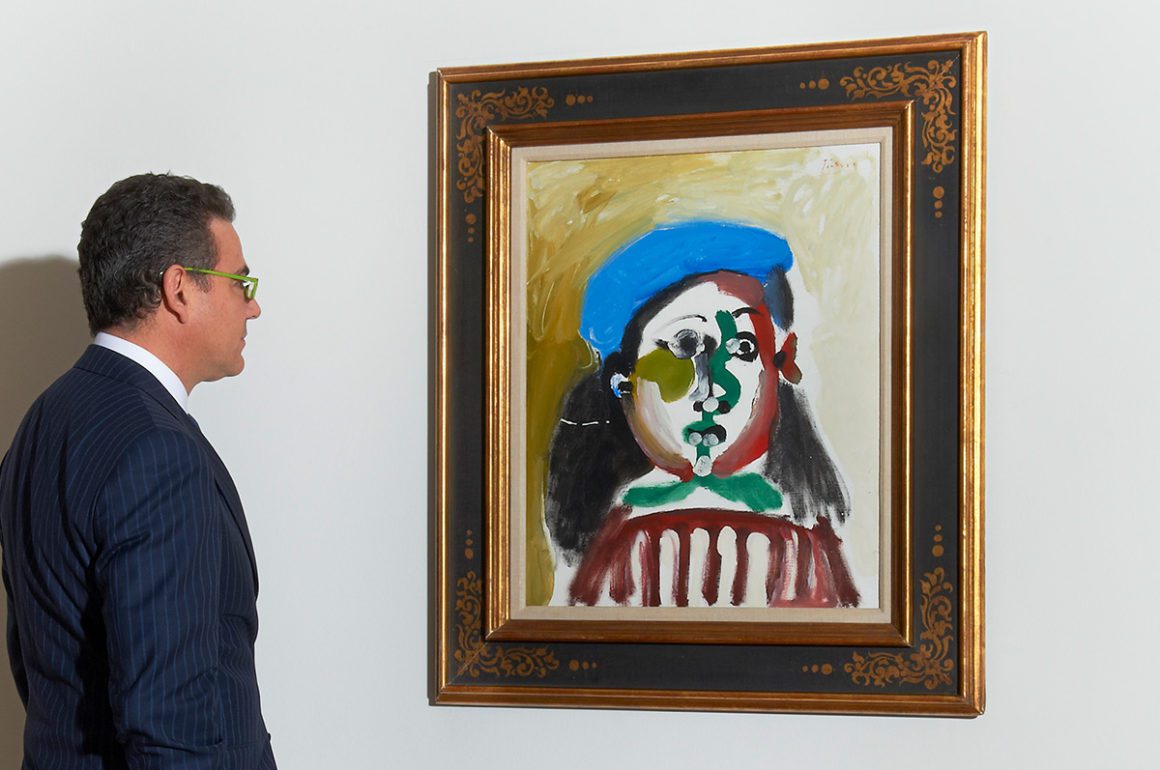
Pablo Picasso’s painting Fillette au béret (1964) is the first artwork to be tokenised. Image by Seraina Wirz / © Succession Picasso / 2021, ProLitteris, Zürich
Have you ever dreamt of owning an invaluable piece of art history? Now is your chance. Digital asset bank Sygnum and art investment pioneer Artemundi have partnered to launch the first ever tokenisation of a work of fine art, starting with a blue chip Picasso painting. Art Security Tokens (ASTs) can be purchased and traded like shares – they mark ownership of an artwork and broadcast it onto the blockchain. artnet’s Vice President and LUX columnist Sophie Neuendorf caught up with Bigna Pfenninger, a partner in the initiative, to find out more

Sophie Neuendorf
Sophie Neuendorf: You started your career in the publishing industry. What inspired you to enter the art world?
Bigna Pfenninger: I am not sure there was a distinct moment of attraction. The publishing industry is interesting where, business aside, one nurtures a culture of knowledge that simply needs financial and administrative support. Certain aspects of the art world, too, are more scintillating where such balance applies.
Follow LUX on Instagram: luxthemagazine
Sophie Neuendorf: How do you see the industry developing post-pandemic?
Bigna Pfenninger: Perhaps the pandemic has accelerated a shift in distribution, boosted technological progress and made money change hands. At best, we will realise it has been a right of passage bringing forth a more mature, transparent and thus, growing art market.

Bigna Pfenninger
Sophie Neuendorf: Your partner bank Sygnum has been offering private and institutional clients the opportunity to invest in structured and alternative assets for several years now. How do you see art tokenisation in comparison to other investments?
Bigna Pfenninger: Tokenising a museum-grade Picasso is the start to a novel level of access to masterpieces formerly reserved to a small group of connoisseurs and collectors. With Art Security Tokens (ASTs), investors can now purchase and trade “shares” in the artwork 365 days a year, 24/7. And yes, Sygnum was the first digital asset bank that was granted a full banking license in Switzerland in 2019. We chose Sygnum because they specialise in creating unique investment opportunities with a focus on high growth assets that are hard to access in a direct and fractional manner.
Sophie Neuendorf: Some would hazard that the public tokenisation of an artwork will depreciate the value. Is there any truth to these allegations?
Bigna Pfenninger: I don’t believe so. Especially given that the Picasso will be the first-ever tokenised artwork, I’m certain its value can only increase! Additionally, there’s governance, but of course, we will wait and observe the developments.
Sophie Neuendorf: How would you describe the main differences between Non Fungible Tokens (NFTs) and the tokenisation of an artwork?
Bigna Pfenninger: We created the Art Security Token (AST) as a fully fungible, safe and easy access to fine art ownership. Here, each token represents an equal, and interchangeable share in the asset with the same rights and obligations. With NFTs, each token is unique, and therefore not designed to be used in this way. ASTs are ledger-based securities issued in accordance with the Swiss Code of Obligations. They are issued through a fully regulated bank and are protected by DLT laws.
Read more: Spanish architect Santiago Calatrava on light and space
Sophie Neuendorf: You launched the first ever tokenisation of an artwork with Pablo Picasso’s Fillette au béret (1964). Valued at 3.7 Million Euros, those interested in investing in this work can buy a piece of it starting at just 4,600 Euros. It’s certainly a lucrative work to own a piece of! Are tokens still available?
Bigna Pfenninger: Yes. Subscription will open at the end of July, on a first come, first served basis. We’re very excited about the launch as it represents a large part of the future of the industry.
Sophie Neuendorf: Do you accept cryptocurrencies in terms of payment for the token?
Bigna Pfenninger: Yes, we do! We accept incoming and outgoing deliveries of cryptocurrencies to be held and used on the banking platform. Transactions for the Picasso token are settled using a digital CHF stablecoin (DCHF).
Sophie Neuendorf: Can you reveal which masterpiece you will tokenise next?
Bigna Pfenninger: We have called our first AST “PIC1”. We will reveal the next masterpiece in September, but I can assure you, it’s marvellous!
Find out more: insights.sygnum.com







Recent Comments